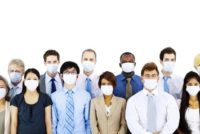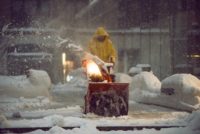Category: Injuries and Illness
Modern safety management goes beyond covering traditional workplace accidents to now being equally concerned with illnesses caused on and even off the job. This section will explain what you need to know to avoid both injuries and illnesses, and to track your progress in reaching this goal.
Free Special REport: Does Your PPE Program Meet OSHA’s Requirements?
In a congressional hearing, a lineup of advocates for worker safety faulted the way the EPA is using its new authority under the 2016 amendments to the Toxic Substances Control Act (TSCA) to shield workers from the occupational exposure to hazardous chemicals.
A panel of the U.S. Court of Appeals for the 7th Circuit disagreed with a district court on how much harm two citizens had to have suffered from polychlorinated biphenyls (PCBs) on their property to prevail in a citizen suit brought against the party responsible for the contamination.
Emergency medical technicians (EMTs) and firefighters experience musculoskeletal disorders (MSDs) at five times the rate of most workers, the National Institute for Occupational Safety and Health (NIOSH) said in a summary of research priorities for the public safety sector.
Workplace injuries and illnesses are undercounted, and the United States needs a more robust occupational safety and health surveillance system, a panel of experts concluded in a recently issued report.
More studies are needed to understand how to prevent and handle infectious disease outbreaks in the workplace, according to the Centers for Disease Control and Prevention’s (CDC) National Institute for Occupational Safety and Health (NIOSH).
Ensuring compliance with federal or state occupational safety and health laws and regulations is only part of a workplace safety and health professional’s job. Often, safety managers also handle aspects of an employer’s workers’ compensation program. The two aspects of the job have different demands.
Just a few weeks into 2019, three workers have died in Washington State, according to the state’s Division of Occupational Safety and Health (DOSH) of the Department of Labor and Industries.
Two federal agencies have issued warnings about the hazards of working in cold weather. The National Institute for Occupational Safety and Health (NIOSH) reminded employers and workers that frostbite and hypothermia can occur when working in cold, wet, icy, or snowy conditions. And OSHA reminded employers about the carbon monoxide (CO) hazards of using portable […]
The Centers for Disease Control and Prevention (CDC) will begin maintaining a firefighters’ cancer registry, trying to determine any links between workplace exposures and subsequent cancers.
Washington is one of the safest places for worker safety and health, the state’s Department of Labor & Industries (L&I) stated Dec. 21, 2018, pointing to recently released workplace fatality figures for 2017.









